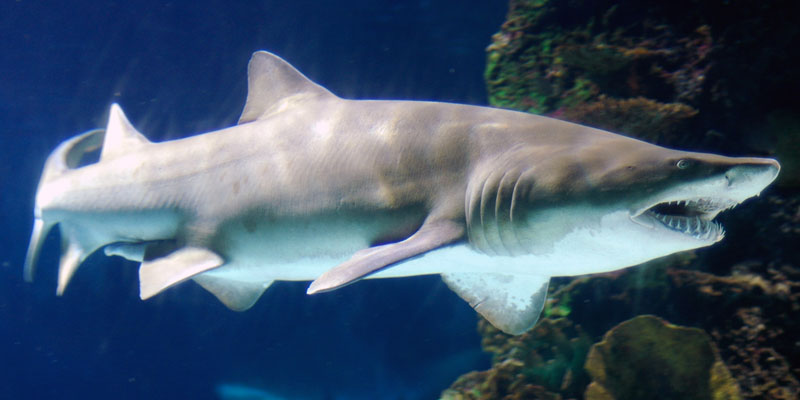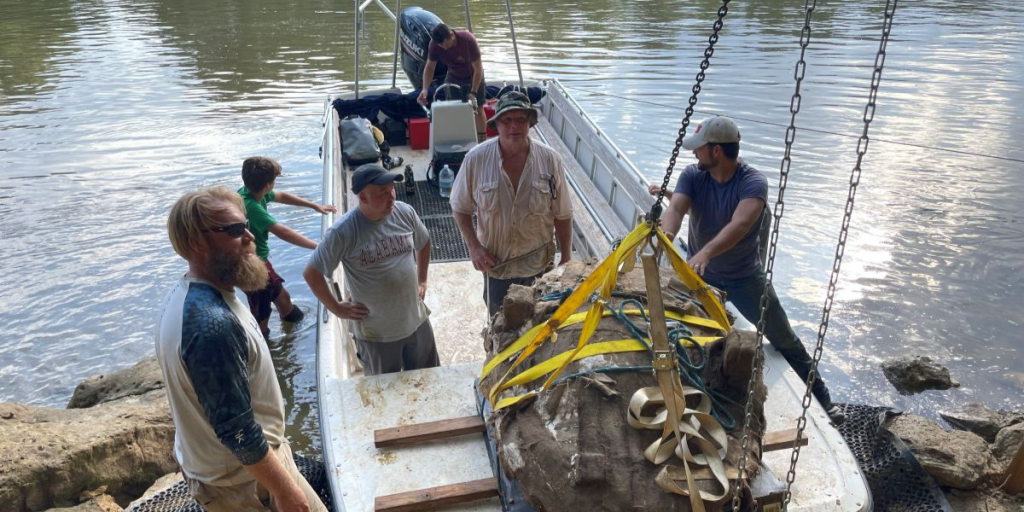A team of scientists, including Jun Ebersole of the McWane Science Center in Birmingham, announced Wednesday the discovery of two new species of prehistoric shark that lived in the southeastern U.S. millions of years ago.
How McWane Science Center discovered new shark species in Alabama from Alabama NewsCenter on Vimeo.
The two new species are ancient relatives of modern sand tiger sharks and lived 35 million and 65 million years ago, respectively. Until this discovery, members of this same genus, Mennerotodus, which are now extinct, were known to have lived only in Europe and Asia.
In order to identify these new species, scientists Ebersole, David Cicimurri, curator of Natural History, South Carolina State Museum, and George Martin, retired USDA soil scientist from Auburn, spent months comparing hundreds of individual prehistoric teeth to those of modern species.
“By piecing together and examining the dentitions of these new shark species, we were able to determine that they are closely related to modern sand tiger sharks,” said Cicimurri. “It was so close, in fact, that we were able to use modern sand tiger jaws to reconstruct them.”
According to Ebersole, the front teeth are very tall and fang-like in both the prehistoric and modern sand tiger sharks.
“The teeth often project out of the mouth, giving the shark a snaggle-toothed appearance, which is perfect for feeding on fishes, crabs, squids and even other sharks,” Ebersole said.
The team examined shark teeth from various museum collections and found that Mennerotodus teeth were fairly common in the Southeast, but they had never been correctly identified.
“Our study is significant because it documents the first occurrence of Mennerotodus in North America,” Ebersole said.
“In addition, because the Mennerotodus mackayi teeth found in Alabama are older than those from other parts of the world, it strongly suggests that this group of sharks originated right here in the ancient Gulf of Mexico,” Ebersole said.
“We named Mennerotodus mackayi, for John L. Mackay, the first president and CEO of McWane Science Center,” Ebersole said. “To honor his lifelong commitment to science and technology, and the foundation he created for the McWane Science Center.”
Mennerotodus mackayi lived during the Paleocene Epoch, about 65 million years ago. “It appeared just after the extinction of the dinosaurs, and based on the number of teeth we recovered, it was likely one of the more common species in the ancient Gulf of Mexico,” Ebersole said.
The second shark, Mennerotodus parmleyi, lived during the Eocene Epoch, roughly 35 million years ago. It was named for Dr. Dennis Parmley, retired professor at Georgia
College and State University, in honor of his contributions to the study of fossils in Georgia.
According to Cicimurri, Mennerotodus parmleyi was identified from hundreds of teeth recovered from a nonoperational kaolinite mine in central Georgia. “The teeth were originally identified as two or three different species, but our reanalysis of the teeth showed they instead belonged to an entirely new species,” Cicimurri said.
The genus Mennerotodus was first identified and named in 1994 by Russian shark paleontologist Viktor Zhelezko. Prior to this study, all known examples were located in Europe and Kazakhstan.
“Discoveries, like ours, are important because they help increase the knowledge of known fossil shark diversity in the Gulf of Mexico and along the Atlantic coast,” Ebersole said. “And, in the case of this particular genus of sharks, we may have actually identified where they originated before moving to other parts of the world.”
To learn more about this important discovery, the study and findings are available via the open access journal Fossil Record.
(Courtesy of Alabama NewsCenter)













